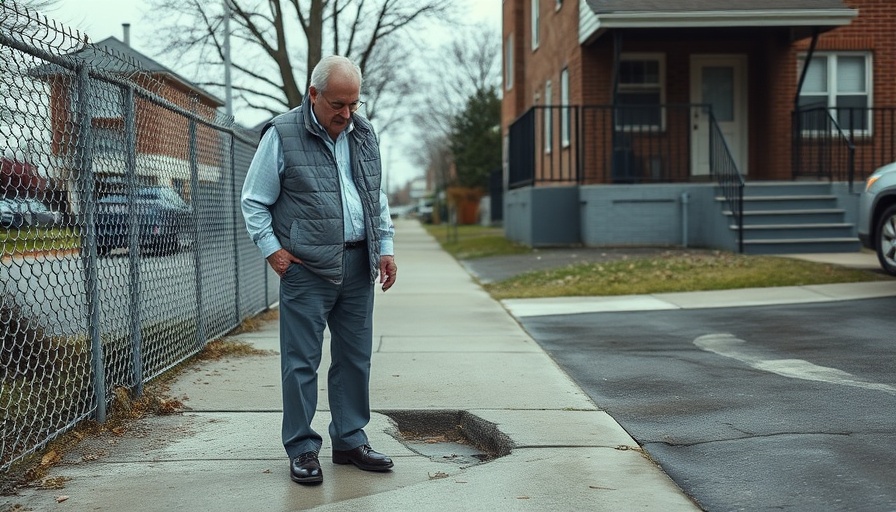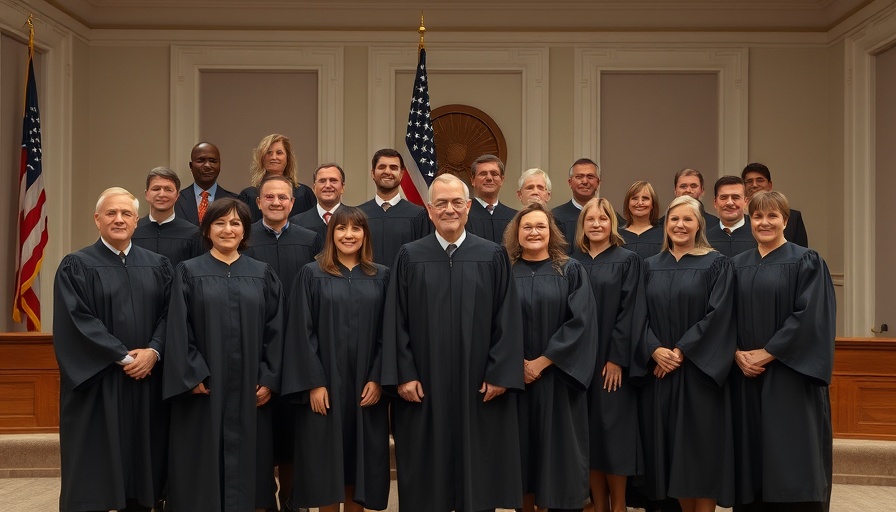
Years of Neglect: The Tale of a Broken Sidewalk in Detroit
In the heart of Detroit, where neighborhoods often rely on the support of local government, one resident's tenacious quest for justice exemplifies the struggles many citizens face when dealing with community maintenance. Otis Register, a long-time resident, found himself at the mercy of municipal delays when a sidewalk near his home was left severely damaged after a contractor's work on a neighboring property. Register's story is emblematic of broader issues surrounding community support and urban infrastructure in cities grappling with revitalization.
From Deterioration to Determination
After moving to the area four decades ago, Register had enjoyed a peaceful existence until the decay began. Following the demolition of a neighboring house due to a fire around 2015, the contractor tasked with removing the site inadvertently caused destruction beyond the property lines, rendering the sidewalk unsafe. Register noticed how the poor condition of the sidewalk posed risks, particularly for children in the neighborhood. "One day, they were coming home from school, a little girl tripped. I don't want to get sued for this. That's the city's property," Register lamented.
The City’s Response: Accountability or Apathy?
Despite Register's persistent attempts to engage the city in repairing the sidewalk, he frequently found himself without answers. His frustrations highlight a crucial issue within urban governance: the lack of efficient communication channels between residents and city officials. After Register turned to local news for assistance, the city’s Department of Neighborhoods finally took notice. Joshua Roberson, a deputy director, acknowledged the historical neglect but assured that, "we want to encourage those who have been buying lots, taking care of their neighborhoods to know that the city is behind them." However, it begs the question: why did it take a decade for necessary action to be taken?
Lessons Learned and Future Implications
This incident sheds light on several lessons for urban development and public service. For one, it underscores the importance of systematic repairs and prompt community responses to visible issues. Infrastructure that remains unaddressed can not only decrease property values but also create potential liabilities for cities. Roberson pointed out that improvements in city policies are in place now, aiming to expedite repairs that once languished. However, the past's lingering issues serve as stark reminders of how delayed actions can erode public trust.
Community Action: A Call to Detroit Residents
The city encourages residents like Register to speak up about issues in their neighborhoods. Such advocacy could bridge the gap between city officials and citizen concerns. The city has made efforts to enhance communication, yet the effectiveness of these measures will ultimately depend on citizen engagement. Register's case shows that working together with local authorities can lead to positive outcomes.
The Bigger Picture: Urban Infrastructure and Safety
The sidewalk saga is not just a matter of local inconvenience; it reflects broader themes relevant to many American cities, where aging infrastructure and heightened scrutiny for public safety intersect. As more residents become engaged in their community, demanding repairs and improvements, cities will be compelled to adapt and respond to demands for maintenance and safety enhancements. This trend can foster a more resilient urban environment—one where infrastructure aligns with community aspirations.
As urban dwellers face similar dilemmas, the importance of civic engagement becomes clear. Residents must hold their local governments accountable to ensure safety and accessibility—an initiative that can transform neighborhoods for the better.
In conclusion, Register's story is a reminder of community resilience and the vital role urban infrastructure plays in maintaining a safe, inviting environment. The collaboration between citizens and officials can take form but requires proactive communication.
 Add Row
Add Row  Add
Add 




Write A Comment